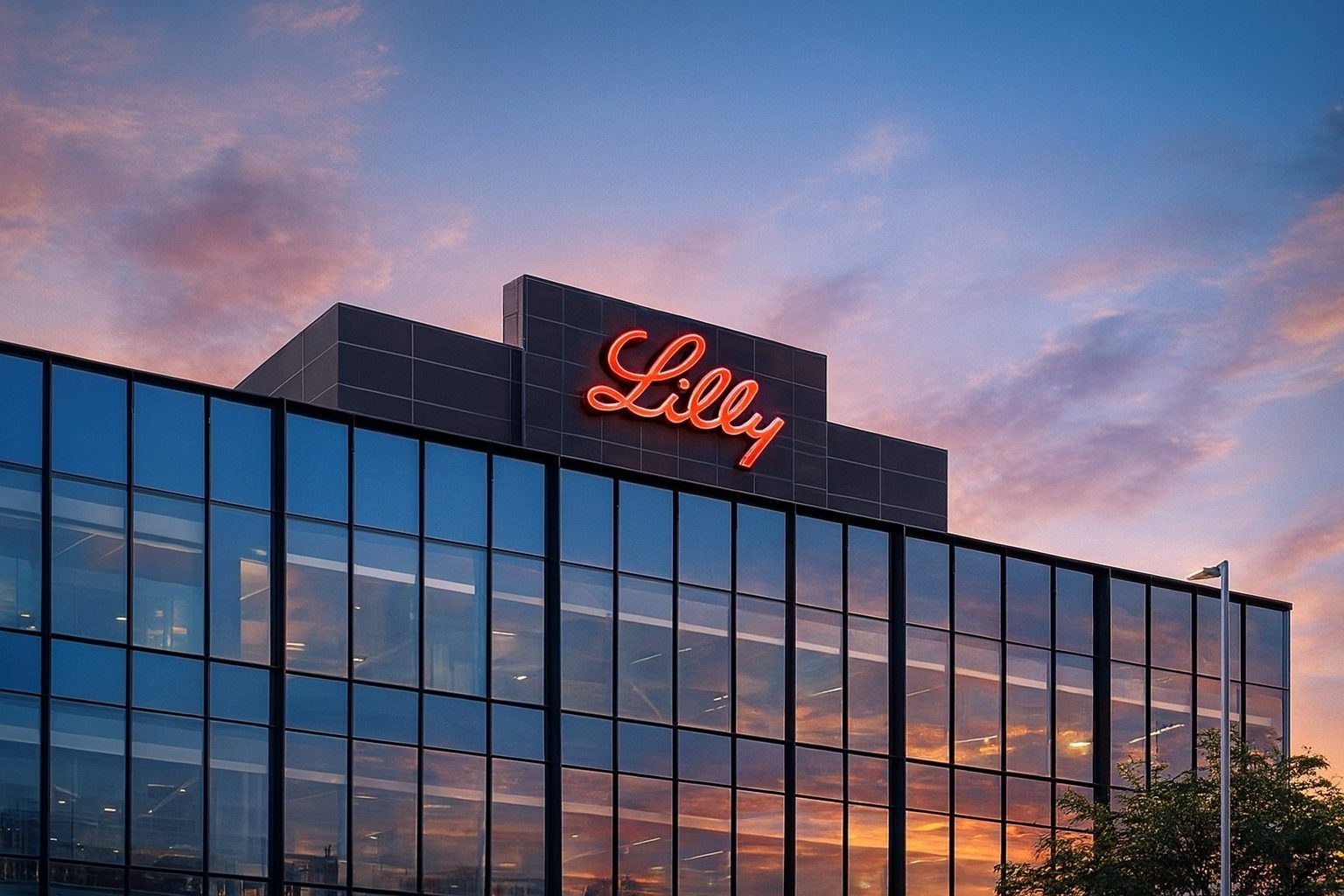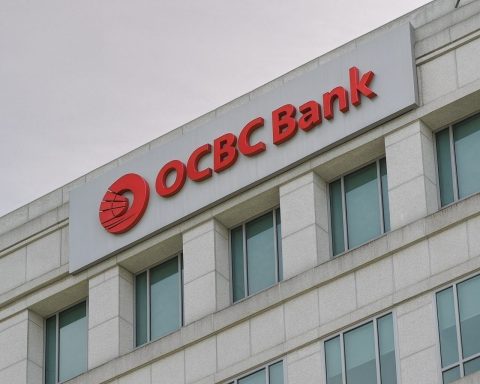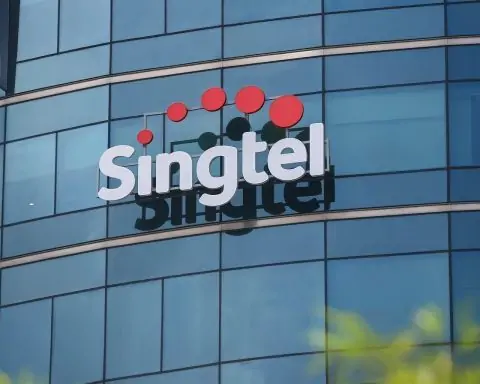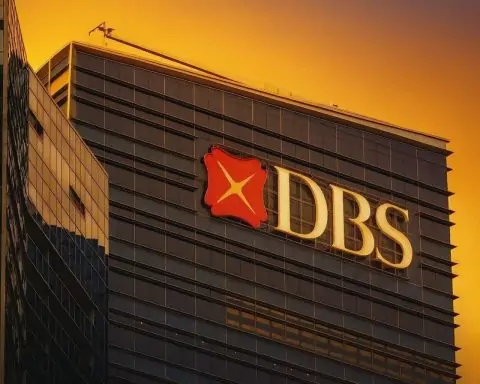Eli Lilly and Company (NYSE: LLY) remains one of the most closely watched stocks on Wall Street today as it trades just below the historic $1 trillion valuation it briefly reached on Friday, while fresh analyst upgrades, new obesity‑drug data and a major setback for rival Novo Nordisk’s Alzheimer’s program dominate the news cycle. [1]
Key takeaways for LLY on 24 November 2025
- Price today: Around $1,070 per share, up roughly 0.9% versus Friday’s close of $1,059.70 as of late‑morning U.S. trading.
- Valuation: Market cap sits near $960 billion, just below the $1 trillion threshold Lilly first crossed on November 21, becoming the first pharmaceutical and healthcare company ever to reach that level. [2]
- Analyst action today: Bernstein raised its price target to $1,300 and maintained an Outperform/Buy rating, citing strong GLP‑1 demand and the coming oral obesity pill orforglipron. [3]
- Macro headline: Novo Nordisk’s two Phase 3 EVOKE/EVOKE+ Alzheimer’s trials of semaglutide failed, reshaping expectations around GLP‑1 drugs in dementia and indirectly influencing sentiment toward Lilly. [4]
- Pipeline news today: A Lilly‑funded Phase 2 study of eloralintide, a once‑weekly injectable weight‑loss drug, showed up to 20% body‑weight reduction over 48 weeks in people with obesity but without diabetes. [5]
Eli Lilly stock price today: still trading like a tech high‑flyer
As of around late morning U.S. time on Monday, November 24, 2025, Eli Lilly shares are trading near $1,069.56, up about $9.86 on the session, a gain of roughly 0.9%. The stock has ranged between $1,000.76 and $1,074.01 so far today, reflecting ongoing volatility as investors digest both macro headlines and company‑specific news.
Third‑party data show:
- All‑time high: About $1,066–$1,067 per share on November 21, 2025. [6]
- Short‑term momentum: LLY is up roughly 5% over the past week, ~33% over the last month and ~41% over the last year. [7]
- Market cap: Around $950–960 billion, depending on intraday price and an estimated ~896–900 million shares outstanding. [8]
In other words, even after a breathtaking run, investors are still pricing Lilly more like a mega‑cap growth or AI stock than a traditional pharmaceutical name.
Headline #1 – Lilly consolidates after becoming healthcare’s first $1 trillion company
On Friday, November 21, Eli Lilly briefly joined the elite group of U.S. companies valued at $1 trillion or more, becoming the first drugmaker and first healthcare company ever to enter the club, according to multiple outlets including Reuters, Al Jazeera and the Wall Street Journal. [9]
A detailed report from CoinCentral today highlights that: [10]
- Lilly briefly exceeded $1 trillion in market value, with shares trading around $1,059 at the time.
- The move was driven by explosive demand for its GLP‑1–based diabetes and obesity drugs Mounjaro and Zepbound, which together generated billions of dollars in Q3 sales with triple‑digit year‑on‑year growth.
- Analysts now see Lilly and rival Novo Nordisk controlling a substantial share of a weight‑loss drug market projected to exceed $150 billion annually by the early 2030s. [11]
Reuters likewise notes that Lilly’s meteoric rise has been powered by weight‑loss demand, with shares up more than 75% since Zepbound’s late‑2023 launch, and metabolic health products now generating more than $10 billion per quarter, over half of total revenue. [12]
Today’s modest gain suggests investors are consolidating after that milestone rather than immediately pushing the stock into a new leg higher.
Headline #2 – Bernstein lifts Eli Lilly target to $1,300 and underscores GLP‑1 leadership
One of today’s clearest stock‑specific catalysts is a fresh analyst upgrade in price target:
- Research firm Bernstein re‑affirmed its Outperform rating on LLY and raised its price target from $1,100 to $1,300, an 18.2% increase. [13]
- The firm’s analyst, Courtney Breen, highlights Lilly’s dominant position across cardiometabolic, oncology and immunology and points to the upcoming oral obesity drug orforglipron as a potential game‑changer. [14]
Bernstein’s move comes on top of an already aggressive round of target hikes in November:
- Truist Securities raised its target to $1,182.
- J.P. Morgan lifted to $1,150.
- Morgan Stanley went to $1,171.
- Citigroup now sits at $1,500, the high end of the Street.
- Leerink upgraded LLY to Outperform and raised its target to $1,104. [15]
Across Wall Street:
- GuruFocus tallies an average one‑year target around $1,015 based on roughly 30 analysts, with a high of $1,500 and a low near $706; its own “GF Value” estimate of fair value sits closer to $1,376, implying additional upside from current levels. [16]
- TipRanks reports a “Strong Buy” consensus: 18 Buy and 2 Hold ratings in the past three months, with an average target of $1,042.89, slightly below today’s price, indicating that some analysts may need to revisit their estimates if Lilly holds above $1,050–$1,100. [17]
The takeaway: sell‑side sentiment is overwhelmingly bullish, and today’s Bernstein call reinforces the idea that the Street expects multi‑year earnings growth from GLP‑1 and related metabolic therapies, even at today’s lofty valuation.
Headline #3 – Novo Nordisk’s failed Alzheimer’s trials rattle the GLP‑1 narrative
The day’s biggest macro shock in the GLP‑1 space doesn’t actually come from Lilly itself, but from Novo Nordisk.
Multiple outlets, including Reuters, STAT, HCPLive and PatientCareOnline, report that Novo’s EVOKE and EVOKE+ Phase 3 trials of semaglutide (Rybelsus) in early Alzheimer’s disease failed to meet their primary endpoint of slowing cognitive decline versus placebo. [18]
Key details:
- The two large, placebo‑controlled trials enrolled around 3,800 participants aged 55–85 and were planned for three years but were stopped after about two years due to lack of efficacy. [19]
- Shares of Novo Nordisk dropped sharply (around 8–12% depending on the source) as the market reassessed the “everything drug” narrative around GLP‑1s. [20]
- Experts quoted by Alzheimer’s advocacy and research organizations say the failure is disappointing but not entirely surprising, and that while some biomarkers improved, semaglutide did not slow clinical progression of Alzheimer’s disease. [21]
For Lilly, the story is nuanced:
- Reuters notes that the failure could actually strengthen competitors like Biogen and Lilly, whose antibody‑based Alzheimer’s drugs Leqembi and Kisunla already have FDA approval but come with logistical and safety challenges. [22]
- At the same time, at least one market wrap today (Somos Hermanos) frames the news as weighing on Eli Lilly’s shares intraday, on the logic that it dampens broader enthusiasm for neurodegenerative applications of metabolic drugs and highlights the risks around Alzheimer’s R&D more generally. [23]
In practice, Lilly’s stock spent part of the session in the red before recovering to a modest gain, suggesting investors are still processing whether the read‑through is net positive or negative for a company that is simultaneously a leader in GLP‑1 obesity drugs and an active player in Alzheimer’s therapies.
Headline #4 – New Lilly‑backed weight‑loss shot eloralintide posts up to 20% weight loss
While GLP‑1 pills in Alzheimer’s disappointed, Lilly had more encouraging news on the obesity front.
A Fox News health report today highlights data from a Lilly‑funded Phase 2 trial of eloralintide, a once‑weekly injectable amylin receptor agonist (not a GLP‑1) developed by Lilly: [24]
- The trial enrolled 263 adults with overweight or obesity (but without diabetes).
- Over 48 weeks, patients receiving eloralintide lost between 9.5% and 20.1% of body weight, depending on dose, versus just 0.4% in the placebo group.
- The drug also improved waist circumference, blood pressure, lipid profile, glycemic control and inflammation markers, which are key cardiometabolic risk factors.
- Side effects were mainly mild to moderate gastrointestinal symptoms and fatigue, with more issues at higher doses.
The study’s lead author, Dr. Liana K. Billings, called the weight loss “clinically impactful”, noting that up to 90% of participants improved by at least one BMI category and that weight loss had not fully plateaued by week 48. [25]
Crucially:
- Eloralintide works via amylin, a different hormonal pathway than GLP‑1. That raises the possibility of combination regimens with GLP‑1s like Mounjaro or Zepbound, which could push efficacy even higher or improve tolerability for some patients.
- The results, published in The Lancet and presented at ObesityWeek 2025, support Lilly’s broader strategy to diversify beyond GLP‑1 alone and maintain a technological edge as the obesity market matures. [26]
Eloralintide is not yet FDA‑approved, but today’s coverage adds another bullish plank to the long‑term growth narrative investors are building around Lilly’s metabolic franchise.
Q3 2025 recap – the earnings engine behind the rally
Much of today’s bullish commentary still leans on the blowout third‑quarter results Lilly reported on October 30, which underpinned the stock’s run into the trillion‑dollar club.
According to Lilly’s own release and multiple financial outlets: [27]
- Revenue:
- Q3 2025 revenue was $17.6 billion, up 54% year‑over‑year, driven by a 62% increase in volume, partly offset by lower realized prices.
- Earnings:
- GAAP EPS rose by $5.14 to $6.21.
- Non‑GAAP (adjusted) EPS jumped $5.84 to $7.02, beating analyst estimates by roughly 19%.
- GLP‑1 powerhouses:
- Mounjaro generated about $6.52 billion, up 109% vs. Q3 2024.
- Zepbound delivered roughly $3.59 billion, up ~185% year‑on‑year.
- Together, these two drugs accounted for a large chunk of the $11.98 billion in revenue from key products.
- Guidance:
- Lilly raised its 2025 full‑year revenue guidance to $63.0–$63.5 billion, up from $60–$62 billion.
- Non‑GAAP EPS guidance was lifted to $23.00–$23.70.
Analysts from Saxo Bank, Zacks and others characterized the quarter as a “beat and raise” that widened Lilly’s lead over rivals in obesity and diabetes. [28]
Those numbers are central to today’s narrative: the trillion‑dollar valuation is not just hype, but is tied to hard revenue and EPS acceleration, with expectations for continued growth into 2026 and beyond.
Policy backdrop – Trump’s “Most‑Favored‑Nation” pricing deal cuts GLP‑1 costs, boosts access
Another major structural driver behind Lilly’s story this month is U.S. drug‑pricing policy.
On November 6, 2025, the Trump administration announced a Most‑Favored‑Nation (MFN) pricing deal with Eli Lilly and Novo Nordisk that dramatically cuts out‑of‑pocket costs for key GLP‑1 and related drugs when purchased through the new TrumpRx platform and for Medicare/Medicaid beneficiaries. [29]
According to the White House fact sheet:
- The price of Zepbound and orforglipron (if approved) will fall from about $1,086 per month to an average of $346 via TrumpRx.
- Medicare prices for Ozempic, Wegovy, Mounjaro and Zepbound will be $245 per month, and Medicare will cover Wegovy and Zepbound for obesity for the first time, with a $50 monthly co‑pay for beneficiaries.
- Lilly will also offer Trulicity at $389 per month (a discount of nearly $600 versus list price), while Novo will provide certain insulin products at $35 per month. [30]
For Lilly, the deal has two competing effects:
- Margin pressure: Unit prices are lower than commercial list prices.
- Volume explosion: Tens of millions more Americans become eligible at far more affordable price points, potentially expanding the GLP‑1‑eligible population dramatically.
Zacks and Reuters both note that investors are watching closely to see whether the sheer scale of demand more than offsets pricing concessions—a key assumption underlying today’s lofty valuation. [31]
How expensive is LLY now? Valuation and sentiment snapshot
Even bulls concede that Lilly is not a cheap stock:
- Trailing P/E: ~52x.
- Forward P/E: around 33x based on consensus earnings forecasts.
- Price‑to‑sales: about 16x trailing sales. [32]
For context, many large pharmaceutical peers trade at low‑ to mid‑teens earnings multiples and low single‑digit price‑to‑sales ratios.
Other data points investors are watching:
- Market cap: ~$950–960 billion today; peaked above $1 trillion last week. [33]
- Short interest: Only about 0.7–0.8% of shares outstanding are sold short, with around 6.4 million shares short and a short ratio under two days, suggesting little outright bearish positioning despite valuation concerns. [34]
- Ownership flows: A CoinCentral analysis today notes that billionaire Stanley Druckenmiller has exited positions in Nvidia, Palantir and Eli Lilly over the past year, rotating capital into Alphabet and Meta as “cheaper AI plays,” underscoring that some high‑profile investors are taking profits in high‑multiple names like LLY. [35]
On the flip side, technical and sentiment data gathered by TradingView show:
- LLY is featured heavily in quality, growth and healthcare ETF baskets, and
- Community and analyst sentiment screens lean towards “Buy/Strong Buy”, with a wide dispersion of technical views from “breakout toward $1,200+” to warnings of a potential sharp correction after such a steep run. [36]
In short, everyone agrees Lilly is expensive—the debate is whether its growth runway is long enough to justify that premium.
What to watch next for Eli Lilly investors
Looking ahead from today’s news flow, several themes are likely to drive LLY’s next moves:
- Obesity pipeline evolution
- More data and regulatory milestones for orforglipron (oral obesity pill).
- Follow‑up studies and potential Phase 3 plans for eloralintide, and whether Lilly pushes dual‑ or multi‑agonist combinations beyond GLP‑1 alone. [37]
- Impact of Novo’s Alzheimer’s failure
- Whether the EVOKE/EVOKE+ semaglutide miss leads payers and regulators to place greater emphasis on antibody therapies like Lilly’s Kisunla, and how neurologists interpret biomarker versus clinical outcomes in designing combination strategies. [38]
- Manufacturing and capacity build‑out
- Lilly has committed billions of dollars in new manufacturing facilities, including expansion in the U.S. and Puerto Rico, to keep up with GLP‑1 demand; execution risk around this build‑out is now central to the investment case. [39]
- Drug‑pricing politics
- The MFN deal with the Trump administration is unlikely to be the last word on U.S. drug pricing. Investors will track future negotiations, potential legal challenges and state‑level actions that could alter profitability for GLP‑1s over time. [40]
- 2026 guidance and beyond
- Independent forecasts (such as 24/7 Wall St.’s modeling) envision Lilly’s revenue potentially approaching $70–80 billion later this decade with EPS rising into the $30–40+ range, but those projections assume that GLP‑1 demand remains robust, pipeline launches succeed, and pricing pressure is manageable. [41]
Bottom line
On November 24, 2025, Eli Lilly stock is trading just under its record highs, consolidating near a trillion‑dollar valuation while fresh analyst upgrades, new obesity‑drug data and the failures of a rival’s Alzheimer’s GLP‑1 trials dominate the narrative.
- Bulls argue that Lilly sits at the epicenter of a once‑in‑a‑generation shift in metabolic and obesity medicine, backed by explosive revenue growth and a deep, diversified pipeline.
- Skeptics worry that valuation, policy risk and execution challenges could eventually catch up with the stock if any part of the story — demand, pricing, manufacturing or R&D — disappoints.
For now, the market’s verdict is clear: LLY remains one of the most prized assets on Wall Street, and today’s news flow largely reinforces the idea that Eli Lilly is playing a long‑term leadership role in both obesity and Alzheimer’s medicine.
Disclaimer: This article is for informational and news purposes only and does not constitute investment advice, a recommendation to buy or sell any security, or a solicitation of any kind. Always conduct your own research or consult a licensed financial adviser before making investment decisions.
References
1. www.reuters.com, 2. www.reuters.com, 3. www.gurufocus.com, 4. www.reuters.com, 5. www.foxnews.com, 6. www.tradingview.com, 7. www.tradingview.com, 8. companiesmarketcap.com, 9. www.reuters.com, 10. coincentral.com, 11. coincentral.com, 12. www.reuters.com, 13. www.gurufocus.com, 14. www.gurufocus.com, 15. www.gurufocus.com, 16. www.gurufocus.com, 17. www.tipranks.com, 18. www.reuters.com, 19. www.reuters.com, 20. www.reuters.com, 21. www.alzheimersresearchuk.org, 22. www.reuters.com, 23. somoshermanos.mx, 24. www.foxnews.com, 25. www.foxnews.com, 26. www.foxnews.com, 27. www.prnewswire.com, 28. seekingalpha.com, 29. www.whitehouse.gov, 30. www.whitehouse.gov, 31. www.reuters.com, 32. finance.yahoo.com, 33. www.reuters.com, 34. finance.yahoo.com, 35. coincentral.com, 36. www.tradingview.com, 37. www.foxnews.com, 38. www.reuters.com, 39. www.nasdaq.com, 40. www.whitehouse.gov, 41. 247wallst.com







